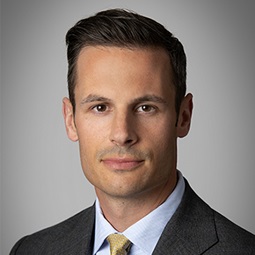PARENT COMPANY LIABILITY FOR THE ACTIONS OF ITS SUBSIDIARIES
While it is still a general legal principle that entities with separate legal personalities within the same group are not liable for each other’s acts or omissions, in the recent Supreme Court judgment of Vedanta Resources Plc v Lungowe it was confirmed that, in exceptional cases, the court can find that a parent company is liable for the actions of its subsidiaries.
Points to consider:
- What types of behaviour will increase the risk of parent company liability for subsidiary operations?
- What does this case mean for PE funds and parents of multinational portfolio companies?
- What practical steps can PE funds and parent companies take to reduce this risk?
BACKGROUND TO THE CASE
In 2015, a large group of Zambian citizens brought proceedings in the English courts against a Zambian company, Konkola Copper Mines Plc (KCM) and its English parent, Vedanta Resources Plc (Vedanta) alleging that their land and health had been damaged and their only source of drinking water had been contaminated by polluted materials discharged from a copper mine operated by KCM.
KEY FINDINGS BY THE COURT
A parent company may owe a duty of care to third parties in relation to damage caused by the operations of its subsidiaries if it can be shown that the parent had assumed a duty of care towards its subsidiary. However:
- there is no presumed duty of care on the parent which arises from the mere existence of a parent / subsidiary relationship; and
- a prescriptive test for deciding whether parent liability arises is not appropriate, so each case must be considered on its facts.
BEHAVIOUR WHICH MAY INCREASE THE RISK OF PARENT COMPANY LIABILITY FOR SUBSIDIARY OPERATIONS
The courts have found that the following factors will increase the likelihood of a duty of care being owed by a parent company in respect of its subsidiary:
- If a parent company holds itself out in its published materials as exercising a degree of supervision and control over its subsidiaries, even if it does not in fact do so.
- If a parent company actively intervenes in, or assumes control of, the actions of its subsidiaries which caused the damage (e.g. via centralised training and monitoring of such activities or enforcement of group-wide policies).
- If:
- the businesses of the parent and subsidiary are the same and the parent has, or ought to have, “superior knowledge” (e.g. sector experience and specialist knowledge) about the relevant business;
- the subsidiary’s system of work is unsafe and the parent knew, or ought to have known this; and
- the parent knew, or ought to have foreseen, that the subsidiary or its employees would rely on the parent using that superior knowledge.
HOW CAN THESE RISKS BE REDUCED?
PE FUND LEVEL
- Ensure that any published materials do not contain statements which assert, or imply, that the PE fund is responsible for the supervision, control and / or implementation of group-wide policies and practices across its portfolio companies.
- Establish appropriate reporting lines to allow portfolio companies to report back to the PE fund on how policies and procedures are implemented (rather than the PE fund continuously and actively monitoring portfolio company activities in relevant areas).
- Shareholders’ agreements should, where possible, avoid having the PE fund undertake to provide services (including employee training) to the portfolio company.
- Effective separation of management of the holding company should be established by ensuring that the boards of holding companies are staffed with directors with the necessary expertise to make strategic decisions in respect of such companies.
PORTFOLIO COMPANY LEVEL
- Holding companies should undertake a review of their group’s ESG policies to ensure that these do not create obligations on a holding company (or the PE fund itself) to prevent harm being caused to a third party.
- Avoid using UK incorporated holding companies if possible.
- Establish a clear framework whereby each subsidiary in the group reports back to the parent company on how policies are being implemented, monitored and enforced at a local level, reaffirming local responsibility for implementation.
- Any management agreements entered into between holding companies and subsidiaries should avoid undertakings from the holding companies to provide training and monitoring services related to ESG and sustainability policies and procedures.
- Ensure that the boards of subsidiaries are adequately staffed by directors who are able to manage the operations of the subsidiary at a local level without the need for active holding company (or fund-level) involvement.






